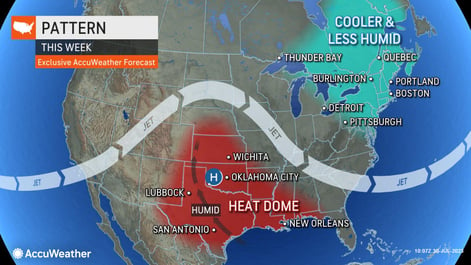Rising temperatures: The growing hazards faced by warehouse workers

Summary
Escalating temperatures are raising concerns for the safety of 1.8 million U.S. warehouse workers due to physical tasks and inadequate climate control systems, leading to dangerous heat-related risks.
Key Highlights
The surge in distribution center construction driven by e-commerce growth has doubled the warehouse workforce and created massive facilities, increasing heat-related dangers.
Extreme indoor heat in some warehouses adversely affects workers’ health and productivity, leading to increased injuries, decreased work capacity and heat-related illnesses, particularly for physically demanding tasks.
Many existing warehouses need proper ventilation and cooling systems, and retrofitting these structures is complex and time-consuming.
As temperatures continue to rise, a new concern is emerging: the safety and well-being of the 1.8 million people working in United States warehouses. The physical tasks within these facilities, often involving loading and unloading boxes, can elevate body temperatures to dangerous levels. While the impact of outdoor heat on workers has been a subject of discussion, the issue of indoor heat stress has been gaining attention. Some warehouses are becoming more dangerous due to the intensifying heat waves.
>>READ MORE: Understanding the Causes of Extreme Heat
Warehouse work increases with extreme heat
E-commerce's rapid expansion has fueled a surge in the construction of distribution centers, especially in some of the hottest parts of the U.S. The U.S. warehouse workforce nearly doubled between 2017 and 2022, with warehouses now covering approximately 20 billion square feet of the country—up about 20% from a decade ago, according to NBC News. As businesses seek to meet online shoppers' two-day delivery demands, massive warehouses with huge inventories are popping up. Many of these warehouses are designed with storage in mind, making some working conditions dangerous.
The impact on workers
The danger posed by extreme indoor heat extends beyond discomfort. Workplace injury rates rise as temperatures increase, decreasing overall productivity. It’s taking a toll on the overall health of workers. Heat-related illnesses, such as heat exhaustion and heat stroke, can have severe consequences, requiring medical attention, contributing to absences and reduced work capacity. In some cases, involving hospitalization or even death.
Heat-related risks are especially pronounced in the warehousing sector, where strenuous physical labor is the norm. Workers in warehouses are particularly vulnerable, often facing temperatures well above recommended safety levels.
>>READ MORE: Extreme Heat: How it can impact your business
Challenges in cooling warehouses
Cooling massive warehouses presents unique challenges. Many existing warehouses need proper ventilation and cooling systems, and retrofitting these structures is complex and time-consuming. While some industries, like food storage, have strict temperature regulations, warehouses for general goods have often fallen through the cracks in terms of proper cooling measures.
>>READ MORE: AccuWeather introduces new index to better assess the impacts of heat waves
How AccuWeather For Business can help
Extreme heat can lead to intense heat waves that can impact employee safety, energy demand, consumer buying behavior, labor scheduling and other essential tasks you manage every day. AccuWeather For Business uses enhanced techniques to produce a single historical, current and predicted weather data database to help your business achieve long-term strategic success.
Is your business prepared for the dangers of extreme heat? AccuWeather for Business's Historical Data can help your business win against Mother Nature. Download a free sample today!








